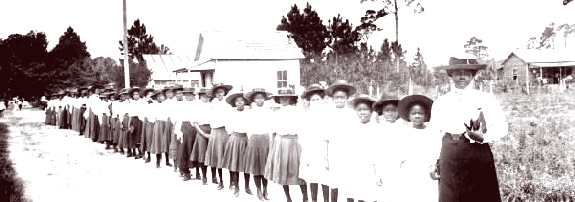

There was music, movement and worship for all occasions and ceremonies. There were instruments that were pitched and percussive:
Ceremonial Music for Festivals
Commemorating agricultural rites
Celebrating the installation of kings or bringing together important chiefs of the nations.
Reenacting historical events of significance
In preparation for war
Embarking upon a major hunting expedition
Ceremonial Music for Religious Rites
Worshiping the gods or lesser deities and spirits, and of ancestors
Ceremonial Music for Common Experiences
Celebrating a birth and each growth event in life and death
Recreational Music
After-dinner entertainment
The foreigners saw all types and sizes of drums hollowed out from tree trunks and used as percussive instruments.
These strangers from a different land also heard unknown sounds with pitched instruments - bells, castanet-types, gong gongs, xylophones (balafoos), sansa (finger pianos / mbira) flutes, bagpipe-types, horns, fiddle-types, harps, lyre-types, lutes, banjo-types.
Though shackled, denied, and forcibly removed from where these sounds and instruments originated, the African carried within him the ability to recall and recreate those distinctive sounds from a variety of ancient cultures. These cultures were abundant in the new world with dancers, musicians and poets that became distinguished with their:
field hollers call and responses work songs improvisations polyrhythms blues notes textures harmonies percussions vocal sounds melismas syncopations
But most importantly, the people of African descent were a people of community and spiritual possession - the foundation upon which African American music was formed and developed. Because religion and culture were intricately interwoven and dance helped to express belief and worship, the Ring Shout (not representing a vocal shout but possibly taken from the Arabic ‘shaw’t’) had all the defining elements such as call and response, percussion, syncopation, coded messages, and pantomime to help solidify the African tradition in America. In the Ring Shout the singers moved circularly counterclockwise in a shuffle without crossing their feet. This cohesiveness of the community and oneness with the Spirit was a spiritually binding force for the enslaved African in America.
An important accompanying and lead instrument in African and African American music was the drum along with other percussion instruments. In the early decades of slavery, dance gatherings and drums were permitted to be used by the slaves. But in 1739, after enslaved Africans in South Carolina lead an organized uprising called the Stono Rebellion, laws were enacted by 1740 that restricted the use of drums. This was a direct retort by the slave owners upon learning that drums were used for communication. A few slave state locations like Place Congo (Congo Square) in New Orleans permitted drumming for certain occasions. Even without the drums, slaves used their bodies to provide percussive rhythms and sounds with hand clapping, foot stomping and pitched notes.
By way of the Ring Shout along with the moans and groans and memories of the mixed tribes of the African people providing free labor in the New World, traditional cultural roots were still maintained but adapted in field hollers, rhythms, harmonies and folk songs.
One outgrowth of folk melodies developed mostly in the fields was the Negro Spiritual. It was a group interactive endeavor. When not in the fields, these melodic moans and groans were often a transitory expression of peace and calm. This communal effort and the invoking of the spirit through music served as the culturally distinguishing footprint towards the development of distinctive and genuine (authentic) American music.
The folk melodies of the Negro Spiritual, often using Old Testament text, provided a means to easing sorrow, connection with the Spirit (ancestral and divinity) and coded communication with other slaves and non-slaves.
If a classification of these songs is possible, we might consider the following examples of songs and their categorization:
Singing of the Negro Spiritual or corn ditties, as they were called, was frequently discouraged in many of the organized churches of the day. The conflict of the cultural significance and value of the Negro Spiritual between the study and presentation of the traditional music of Protestant Church was ever present throughout the free states. Yet, praise houses, camp meetings, bush meetings and ‘the secret church’ provided those who were enslaved a safe haven to express, release and unite in a time of separation.
In the free-state locations of the Republic and as early as the beginning of the 1800’s, Americans of African descent were performers, composers, and musicians focusing on other genre of music including the Classical (European-based) styles of music.
In my next article, I will explore the variety of African American music and show the paths theses musical forms have taken.
The above article is an excerpt from
THE HISTORY OF AFRICAN AMERICAN MUSIC
conceived by Gwen Moten and B. Dexter Allgood, Ph.D.
Tempo: Slow and Melodic - “I’ve Buked and I’ve Been Scorned” “There Is A Balm In Gilead”
Tempo: Fast And Rhythmic - “Zekiel (Ezekiel) Saw De Wheel” “Elijah Rock”
Form: Call And Response - “In Dat Great Gitin’ Up Mornin” “Go Down Moses” l “ Swing Low Sweet Chariot”
Emotionalism: Sorrow Songs - “Nobody Knows De Trouble I’ve Seen” “No More Auction Block For Me”
Introspection l Intercession Of Deity - “I’m Trouble In Mind” “Give Me Jesus” l “I Want Jesus To Walk Wid Me”
Coded Messages - “De Gospel Train” “Steal Away” l “Wade In De Water”


Mary McCloud Berthune and her students
